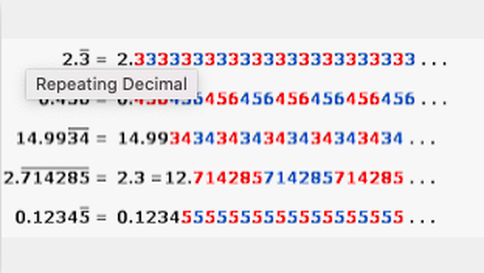- No words or test this week, but starting you must bring me new word with the definition each day this week. Find the word in your home reading or elsewhere! Bring your first word with you tomorrow.
- Today I forgot to collect the words and meanings. TOMORROW I WILL COLLECT 2 WORDS AND DEFINITIONS FROMM EACH STUDENT
3.) POST A RESPONSE:
Answer the following questions:
- List the strategies we learned for finding the decimal equivalent of a standard fraction? (include and example for each strategy)
- What strategies did we learn to determine if a fraction will have a repeating or terminating decimal? (include an example for each strategy)
- ** Question #2 is for grade 7 only, unless you want to do it!






 RSS Feed
RSS Feed
